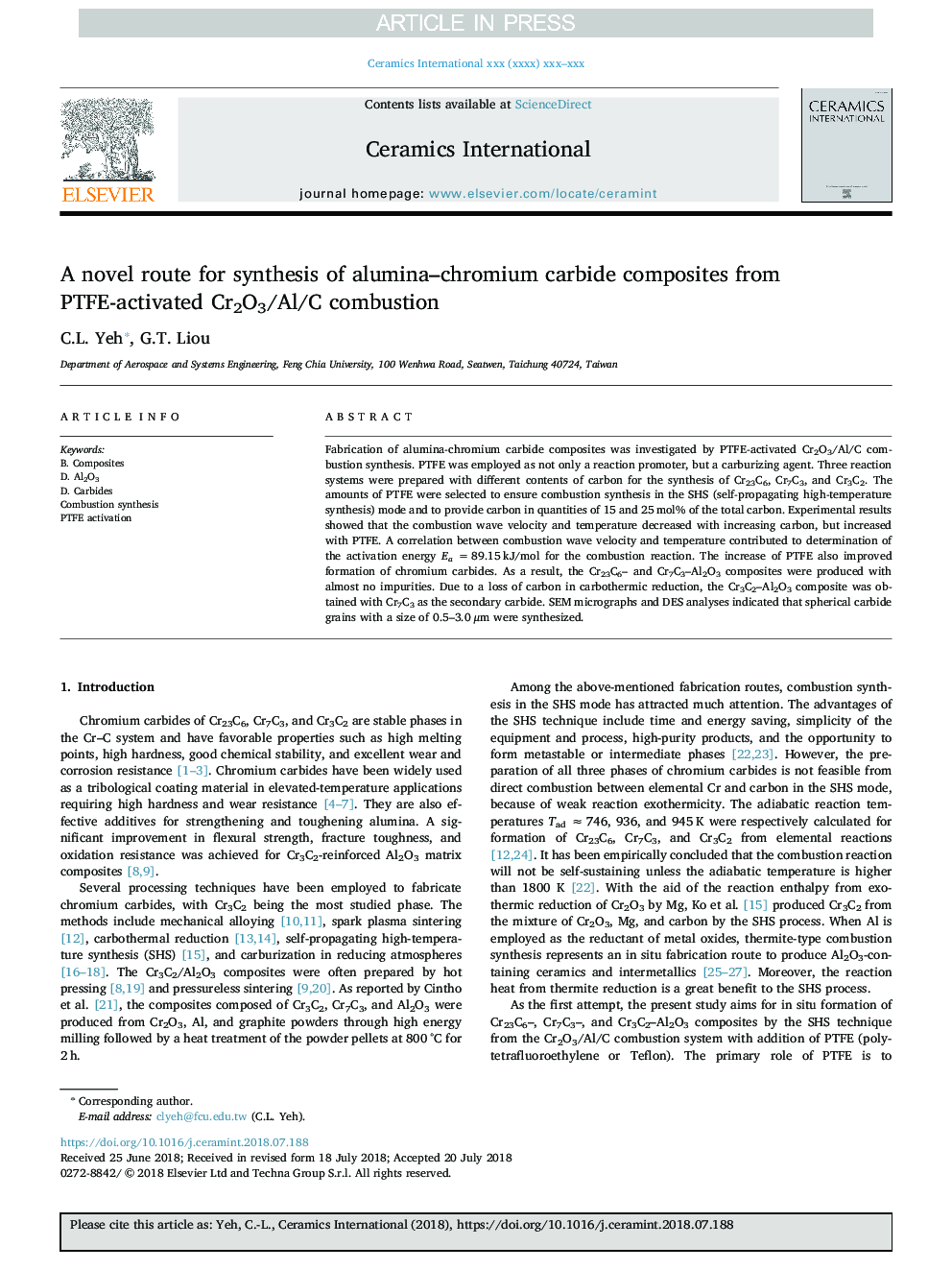| Article ID | Journal | Published Year | Pages | File Type |
|---|---|---|---|---|
| 10155414 | Ceramics International | 2018 | 6 Pages |
Abstract
Fabrication of alumina-chromium carbide composites was investigated by PTFE-activated Cr2O3/Al/C combustion synthesis. PTFE was employed as not only a reaction promoter, but a carburizing agent. Three reaction systems were prepared with different contents of carbon for the synthesis of Cr23C6, Cr7C3, and Cr3C2. The amounts of PTFE were selected to ensure combustion synthesis in the SHS (self-propagating high-temperature synthesis) mode and to provide carbon in quantities of 15 and 25â¯mol% of the total carbon. Experimental results showed that the combustion wave velocity and temperature decreased with increasing carbon, but increased with PTFE. A correlation between combustion wave velocity and temperature contributed to determination of the activation energy Ea =â¯89.15â¯kJ/mol for the combustion reaction. The increase of PTFE also improved formation of chromium carbides. As a result, the Cr23C6- and Cr7C3-Al2O3 composites were produced with almost no impurities. Due to a loss of carbon in carbothermic reduction, the Cr3C2-Al2O3 composite was obtained with Cr7C3 as the secondary carbide. SEM micrographs and DES analyses indicated that spherical carbide grains with a size of 0.5-3.0 μm were synthesized.
Related Topics
Physical Sciences and Engineering
Materials Science
Ceramics and Composites
Authors
C.L. Yeh, G.T. Liou,
